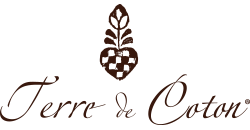By debunking common myths, we uncover the layers of meaning within these stories, revealing their relevance to contemporary society and the human experience. Whether you are a seasoned reader or new to dystopian literature, understanding these realities enhances your reading experience and encourages meaningful discussions about the world we live in.
In reality, many novels feature protagonists who resist oppressive systems and work towards change. In this article, we will debunk seven common myths associated with famous dystopian novels.
-
Myth 1: Dystopian Novels Are Always Set in the Future
Fact: Dystopian novels can be set in both the future and the present.
While many dystopian tales, such as “1984” by George Orwell, are set in a futuristic context, others like “The Handmaid’s Tale” by Margaret Atwood reflect contemporary issues within a dystopian framework. By debunking these common myths, we can appreciate the depth and relevance of dystopian narratives, recognizing their ability to reflect our world and inspire critical thought. John Mandel emphasize the importance of human connection and creativity in the face of adversity, reminding readers that even in dystopian settings, there is potential for redemption and growth.
-
Myth 5: Dystopian Literature Is All About Government Control
Fact: Dystopian themes extend beyond government oppression.
Although government control is a common theme in dystopian literature, the genre also explores issues such as environmental collapse, corporate greed, and social inequality.
Furthermore, dystopian books challenge us to reflect on our world and inspire action towards a more equitable and hopeful future. Embrace the complexity and richness of these narratives, and let them inspire you to think critically about the future.
In this article, we will debunk seven common myths about dystopian society books, providing clarity and insight into what these stories truly represent.
-
Myth 1: Dystopian Books Are Just About Dark Futures
Fact: Dystopian books often explore human resilience and hope even in the face of oppression.
While many dystopian narratives depict grim scenarios, they frequently highlight the strength of the human spirit.
Let’s dive in!
-
Myth 1: Dystopian Books Are Just About the Future
Fact: Dystopian novels can be set in the present or past.
Many readers believe that dystopian stories must take place in a futuristic setting. Classics like George Orwell’s 1984 and Aldous Huxley’s Brave New World continue to resonate with mature audiences, showcasing the genre’s depth and diversity.
-
Myth 3: Dystopian novels lack character development.
Fact: Strong character arcs are central to many dystopian narratives.
Good dystopian novels often feature well-developed characters whose personal struggles reflect broader societal issues. By debunking these common myths, we can appreciate the depth and complexity of the genre. By debunking these common myths, we can better appreciate the depth and relevance of these works.
In this article, we will debunk seven common myths about good dystopian novels, presenting facts and explanations that will enrich your understanding of this fascinating genre. top dystopian books
-
Myth 1: Dystopian novels are always pessimistic.
Fact: Not all dystopian novels end on a negative note.
Many dystopian stories incorporate elements of hope and resilience.
Books About Dystopian Society: 7 Common Myths Debunked
Dystopian literature has captivated readers for decades, painting vivid pictures of societies gone wrong. Works like “The Hitchhiker’s Guide to the Galaxy” blend comedic elements with dystopian themes, making the genre accessible and engaging for a wider audience. most popular dystopian books
-
Myth 7: Dystopian Literature Is a Recent Phenomenon
Fact: Dystopian themes have existed for centuries. popular dystopian novels
Dystopian literature is often viewed as a modern trend, but its roots can be traced back to classics like “A Brave New World” and “Fahrenheit 451.” These early works set the stage for contemporary authors, illustrating that concerns about society and humanity’s future have long been a part of literary discourse.
What You Should Really Know
Understanding the myths surrounding dystopian literature is essential for appreciating its depth and relevance.
Good Dystopian Novels: 7 Common Myths Debunked
Dystopian literature often captivates readers with its bleak portrayals of society and humanity.
For instance, while Orwell’s “1984” presents a grim totalitarian regime, Ray Bradbury’s “Fahrenheit 451” focuses on censorship and the consequences of a technology-driven society.
-
Myth 1: Dystopian novels are always pessimistic.
-
Myth 3: Dystopian Books Are Only for Young Adults
Fact: Classic dystopian literature appeals to readers of all ages.
While many contemporary dystopian novels target young adult audiences, classic works like “Brave New World” and “The Handmaid’s Tale” resonate with adult readers. Classics like Brave New World and 1984 are often studied in high schools and universities, making them relevant for adult readers as well.
-
Myth 3: Dystopian Books Are Always Dark and Depressing
Fact: Dystopian narratives can also be hopeful and inspiring.
While many dystopian novels feature grim settings and dire situations, they often contain underlying messages of resilience, hope, and the possibility of change. This broad appeal allows readers from diverse backgrounds to connect with the stories, making dystopian literature accessible to all.
-
Myth 7: Dystopian Series Are All the Same
Fact: Each dystopian story offers a unique perspective.
While some common tropes exist within the genre, each dystopian series brings its own unique voice and perspective.
-
-
